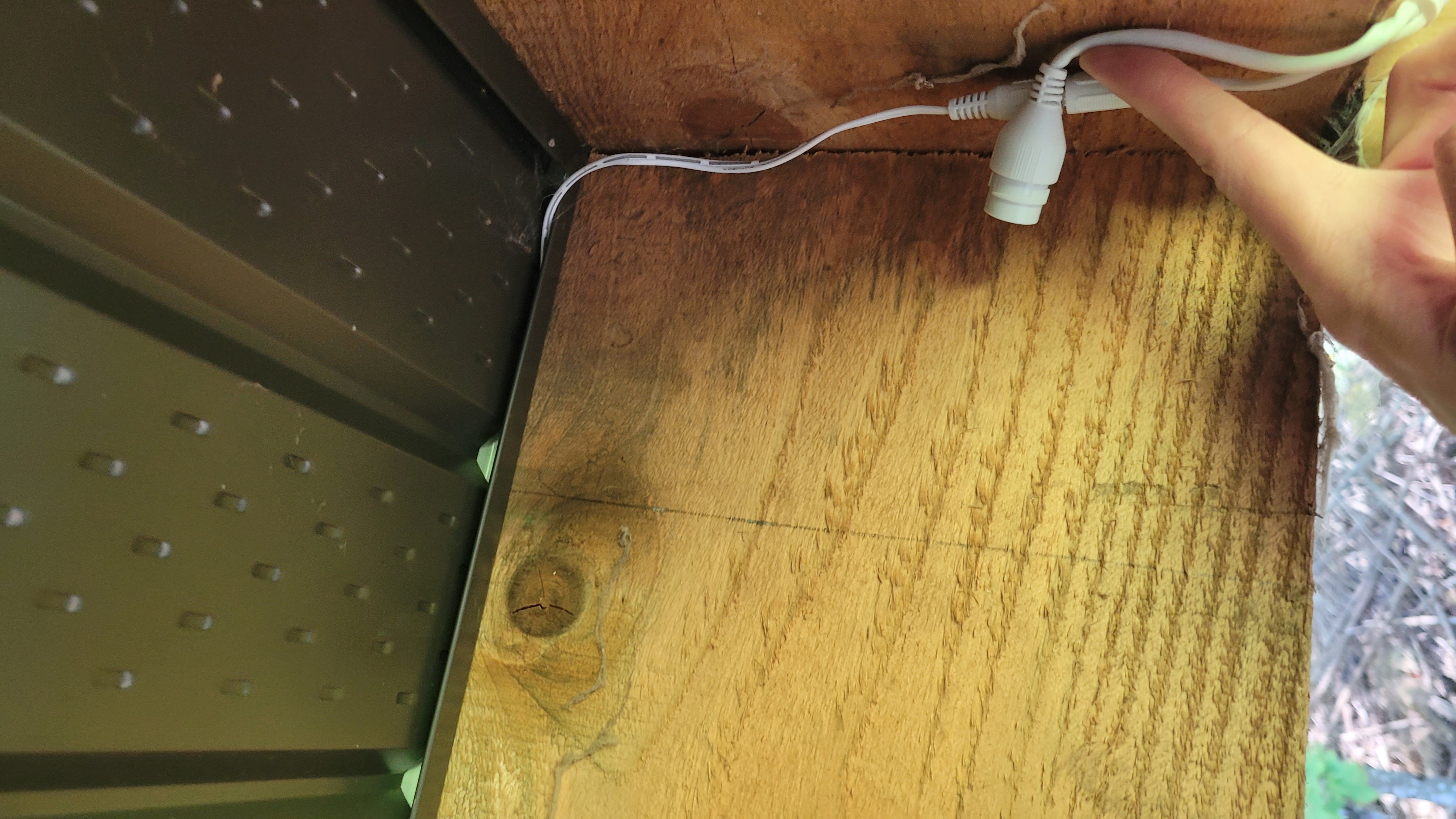this post was submitted on 20 Sep 2023
20 points (95.5% liked)
Electricians
472 readers
1 users here now
founded 1 year ago
MODERATORS
you are viewing a single comment's thread
view the rest of the comments
view the rest of the comments

Ah good questions! It's powering a security camera that would be constantly running and uses '12 V DC ±25%, Max. 5.32W' according to the specs.
It's this guy for what it's worth:
https://www.defendercameras.ca/products/guard-pro-2k-wifi-plug-in-power-security-camera
It says on the page that "The power supplies are not water-resistant and should not be used outdoors", so I'm not sure if that just means they shouldn't be exposed to water (which they wouldn't be here). Defender also has this installation video in which they specifically say it can be plugged in outside, but isn't recommended only for water concerns (2m 24s):
https://m.youtube.com/watch?v=6rt3H97-g-w
All that to say I think it's inherently safe to be outside and covered, but I just have no idea if making contact with an aluminum soffit is dangerous at all :)
As long as the whole wire run is that neat, the soffit probably isn't anything to be concerned about, but personally i would run a cable support on the frame and put the wire in that, instead of how you have it here.
Water doesn't just mean submerged. Water comes from humidity, condensation and dew daily. If it's not rated for that then it will likely fail after some time. It's being used in a way it wasn't designed to be, that has an effect on the lifespan of a device. To mitigate that you could put it inside of some type of conduit.
I typed all of this out, and then decided to check your link for better pictures. That camera comes with ethernet waterproof cable shielding. I'm guessing that is exactly enough to go from the camera to the mounting bracket. So no, none of this cable is rated to be outdoors, this is not a safe way to install it. You either need to run conduit or penetrate the wall behind the mounting hardware and feed it through there.
Damn, this makes a lot of sense. Is there any kind of conduit you would recommend then? I think I've seen that anything PVC is ideal for outdoor cables. Would that also help with the condensation risks?
No, pvc is not water tight at all. I'd grab some sealtight flexible conduit, nonmetallic would be fine. Just grab some one hole straps and support the conduit every 6-8 feet. It's under your deck and you're a homeowner, not a professional; theres no reason to try and make it straight or neat.
You will need some sort of an enclosure to run the sealtight to. Any outdoor rated junction box should be fine, mount it as close as you can because your going to be using that ethernet watertight protector to go from the junction box to the camera itself. I'd probably just mount the camera to the enclosure cover itself and make it easy.
My god I have so much to learn. That makes a lot of sense. Thanks so much for all your help. I'll get cracking on this in the coming days you might get a few DMs in the near future haha.
No worries man, glad to help.
I was gonna DM you but I figured I might as well keep it here in case it can help someone else :)
It looks like the first few inches of cable coming out of the camera (the segment with the power/ethernet splitter) is outdoor rated. It's just the thin extension cable and power block cable that are meant for indoors it seems.
So what if I bought something like this?
Being sure that it's compatible, I could run this outdoor rated cable all the way to a junction box right beside the outlet, instead of installing conduit the whole way. Is that a crazy idea?
Yeah, as long as it's rated for outdoors you should be fine. And a little extra tape and heatshrink are always worth it in the long run.
Amazing. I wish I could pay you but I hope my thanks are enough :)
Not an electrician but 12V dc is relatively low current.
I don’t think that’s any kind of electrocution/shock hazard (assuming there’s some kind of drip loop where water can’t flow down the plug to a socket)
That being said what about the equipment? Is it expensive enough that a short frying it out would be a huge problem?
In this case there would not be much current, which we know from OP sharing that the device in question uses 5.3 watts at the most. At 12 volts 5.3 watts is .44 amps.
Watts are power, which in electrical terms is Volts (electric difference) times Amps (current). If electricity were water, volts would be the water pressure and amps would be the size of the pipe with watts being the volume of water per period of time. You can have a huge pipe with very low pressure and pull 1 gallon per minute out of it, or you could have a much smaller pipe under more pressure and get that same gallon per minute.
12v circuits can carry however much current is pulled up to however much can be supplied by the power source, so long as the conductor doesn't overheat and burn. The device in question pulls less than half an amp from its power supply while a 12v car battery can supply over 100a when the starter is cranking the engine.